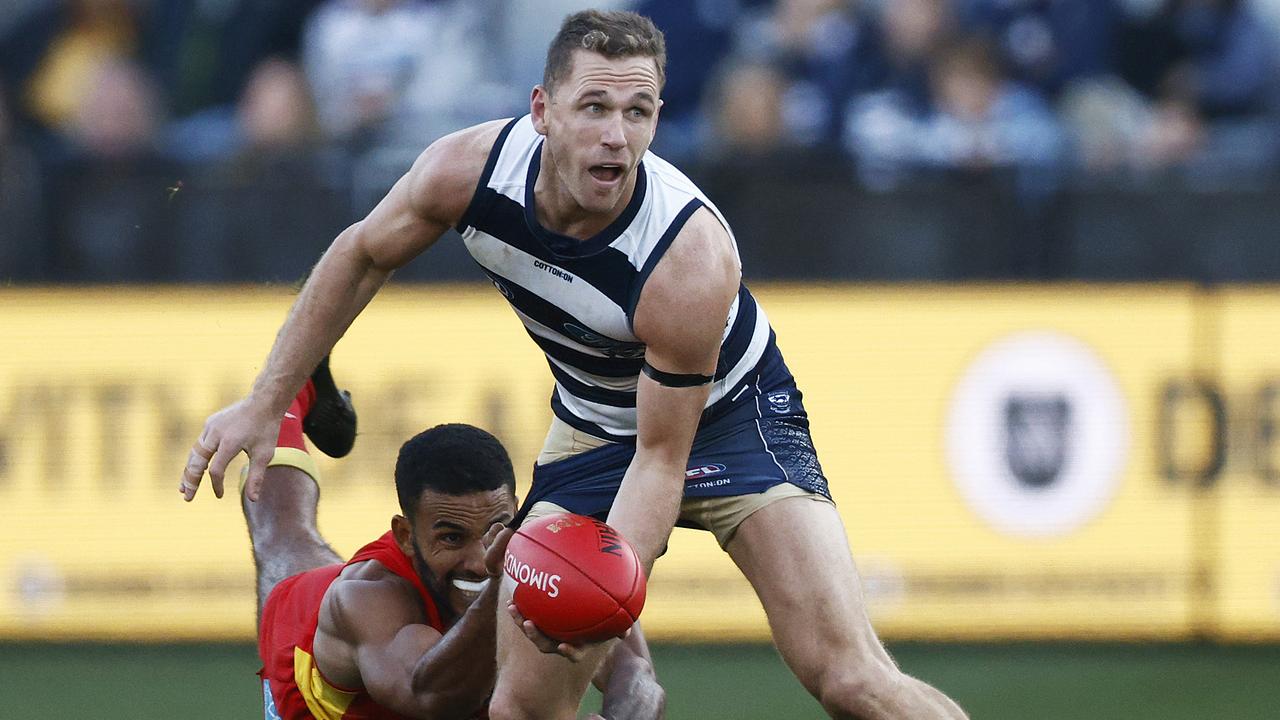
THE POST-BYE EFFECT: Fact or Fallacy?
Picture this: It’s been a gruelling front half of the the AFL season. Three months of high-intensity football week-in week-out has taken it’s toll and has you feeling a bit banged up and a touch worse for wear.
But the light at the end of the tunnel is now right in front of you – it’s bye week! A weekend off! Time for some well-deserved R & R and the perfect chance to get your mind and body right to hit the second half at full tilt.
You’ll come out of this bye week with a head full of steam and the team will be in a position to play its best football……right?
Every year around AFL mid-season bye time, the media loves to get stuck into the theory that certain teams under-perform in the week immediately following their bye. It always makes for an interesting talking point as it bucks the notion that a team with a week’s rest should theoretically perform better given they’ve had a chance to rally, nurse wounds and freshen up enough to come out the back end of the bye fit and firing.
Most of the articles I see written about the post-bye hoodoo back up their argument using a team’s post-bye win-loss record and don’t go any further than that. From a statistical viewpoint I have a big bone to pick with this.
While simple using a win-loss record does shed some light on how well (or not) a team performs, it completely fails to capture important details about the team’s true performance relative to expectation.
What quality was the opposition in each of the team’s post-bye fixtures?
In how many post-bye fixtures was the team required to travel interstate?
What was the team’s winning record like up until that point in the season? Perhaps they’d been losing most of their games pre-bye as well.
Was the opposition also coming off a bye and therefore also feeling much “fresher”? Would that scenario cancel out the “post-bye effect”?
All of these factors seem to often be completely ignored when a media outlet publishes an article which depends solely on a team’s win-loss record to determine their post-bye fortunes and misfortunes. This has made me naturally skeptical of whether the “post-bye blues” is actually a genuine phenomenon which teams face, or whether the entire concept is a just fallacy constructed through an insufficient source of information wielded by those who seek to find a story where one do not exist.
As we have now reached the bye period for Season 2021, I decided the time was right to dig a little deeper in to find out the truth around the “post-bye hoodoo”.
Comparing Expected Wins to Reality
There were a couple of angles I thought about approaching this topic from (e.g. pre-bye win %, post-bye win % versus rest-of-season win %), but in the end I decided the best and perhaps simplest way is to use the concept of expected wins to find a team’s true level of post-bye performance. By comparing a team’s expected and actual win counts across all post-bye fixtures, any sizeable differences between the two may indicate some change in level of performance.
There are 1,001 different ways that one might go about calculating the likelihood of one team beating another. For the purpose of this article I could have built a predictive model from which inferences about win expectations could be drawn, but I didn’t want to go down that route as then it becomes a more subjective matter of my model’s word against reality, which doesn’t seem like a reasonable way to solve this problem. Similarly I could have used someone else’s model but that may have lead to the same problems.
The solution I thought served best here would be to make use of betting odds. By using betting odds, the “wisdom-of-the-crowd” effect comes into play which helps to find a balanced and (for the most part) unbiased view of a team’s chance of winning a certain game. From these odds we can construct implied probabilities of each team winning a game which essentially can be viewed as an expected win rate.
Now, I’m sure I’ve set off plenty of alarm bells by raising the prospect of using betting odds in a probabilistic study, but by using pricing data from the Betfair Exchange which operates on a commission-based pricing structure rather than having over-rounds on markets, we can also be sure no bias is introduced by a bookmaker’s margin being imposed on the prices. That is, combining two teams’ odds in a given match should add up very close to an even 100% market and nothing more.
We can obtain an expected win rate for a team in a given match by simply taking the reciprocal of their odds:
For example, a team who is listed at $2.00 (unbiased decimal odds) to win a game would be considered a 50% chance of winning, or in other words can be said to have 0.5 expected wins.
In this same fashion we can calculate the expected number of post-bye wins a team has had since 2011 and consequently compare it to their actual number of post-bye wins to get an idea of relative performance. Take a look at the results in the table below.
| Team | Post-Bye Games | Actual Wins | Expected Wins | Differential |
|---|---|---|---|---|
 | 11 | 7 | 5.04 | +1.96 |
 | 11 | 8 | 6.26 | +1.74 |
 | 11 | 8 | 6.56 | +1.44 |
 | 11 | 4 | 3.15 | +0.85 |
 | 10 | 5 | 4.29 | +0.71 |
 | 11 | 4 | 3.59 | +0.41 |
 | 11 | 5 | 4.71 | +0.29 |
 | 11 | 6 | 5.94 | +0.06 |
 | 12 | 6 | 6.06 | -0.06 |
 | 11 | 4 | 4.59 | -0.59 |
 | 11 | 5 | 5.64 | -0.64 |
 | 11 | 5 | 5.96 | -0.96 |
 | 11 | 4 | 5.35 | -1.35 |
 | 11 | 6 | 7.37 | -1.37 |
 | 11 | 5 | 6.43 | -1.43 |
 | 11 | 1 | 2.84 | -1.84 |
 | 9 | 2 | 4.38 | -2.38 |
 | 11 | 2 | 7.70 | -5.70 |
And there it is.
Up until this point in the article, I’ve intentionally avoided calling out Geelong as the main focus of this analysis (aside from an unflattering thumbnail image of course), but an unholy expected win differential of -5.7 wins from just 11 post-bye outings paints a pretty vivid picture of the truth around the Cats’ post-bye performances.
In the same timeframe the Saints, Eagles and Hawks have managed to perform well-above expectation in their post-bye fixtures, all with positive expected win differentials greater than an entire game. It is a stark difference to the reality that Geelong faces at the other end of the list, along with the fledglings in GWS and Gold Coast who both also have underperformed post-bye, even when taking into account a well below-par expected win rate of 26% in Gold Coast’s case (1 win from 11 post-bye games still ain’t great though).
Something else interesting jumps out at me from this table though. If we sum up the differentials column, we find that across all clubs there is an expected win differential of -8.9 wins. Across 196 post-bye fixtures since 2011, that equates to 4.5% less wins than expected.
What does this mean?
We need to take into consideration that we are using betting odds as our expected win input here. Perhaps punters do believe that teams will be fresher coming off their bye and bet accordingly? If this is the case, we could somewhat rationally conclude that coming off a bye is far less of a benefit for teams than the general public appears to believe.
Alternatively we could conclude that most teams perform roughly as expected after a bye – it’s just Geelong who perform far worse than expected, as their expected win differential of -5.7 wins makes up a sizeable proportion of the league-wide figure of -8.9 wins.
Above all, we could say that this is just a result of random variation, but that’s no fun!
I came into this analysis feeling somewhat skeptical about whether the widely-scrutinised Geelong – or any other club for that matter – truly did underperform after a bye, but with such a large expected win differential, I think I maybe should be giving the journos more credit than I have done previously, even if their over-reliance on using a team’s post-bye win-loss record to draw their conclusions remains a somewhat dubious approach.

Let’s Take a Closer Look at Geelong
An expected win differential as large as the Cats’ deserves a closer look. After all, the initial motivation for this article is quite clearly centred around a lack of proper analysis by the media into their post-bye worries.
First, the stats:
- Two wins from 11 post-bye outings. A 22% win rate.
- Betting odds expected them to win 7.7 of those 11 games. A would-be 70% win rate.
- For the record, the two actual wins were a 66-point win in 2011 v North (91% expected chance of winning according to betting odds) and another 66-point win in 2020 v Essendon (82% chance).
- From their 11 post-bye games, two came against teams who were also coming off a bye. The Cats lost both. They went 2-7 in the other nine where their opponents had played the previous week.
Now while 11 games is still a fairly small sample size to study, such a large differential between expected and actual wins is surely enough to provoke even the least inquisitive mind. This feels like a somewhat appropriate opportunity to whip out the trusty old statistical significance test, but I don’t think that is the best way to find out the reasons why this phenomenon exists.
Instead I want to get (footy) statistical and see if there’s an area in Geelong’s post-bye game which is particularly lacking.
Key Statistical Indicators
My slightly vague hypothesis – there is a key statistical area in which Geelong’s game post-bye falls down in comparison to the rest of the their season. Let’s investigate whether this is true, and if so what that statistic is.
I’ve assembled data for five common statistics which I feel could have a say in Geelong’s misfortunes. I’ve avoided raw counts as I feel they may be skewed by the way in which each of the 11 post-game byes were played strategically and instead gone for differentials, namely contested possessions, uncontested possessions, inside-50s, clearances and disposals. It isn’t likely to be enough to pin-point an exact shortcoming in Geelong’s game-plan but it might be able to tell us something interesting regardless.
We can compare the difference between each of Geelong’s post-bye games and their corresponding season average for each statistic. To view this holistically, we can then take the average across the whole time period (2011-2020).
| Statistic | Average Differential between Post-Bye Game v Rest of Season |
|---|---|
| Contested Possession Differential | -15.3 |
| Uncontested Possession Differential | -2.7 |
| Inside 50 Differential | -5.5 |
| Clearance Differential | -3.6 |
| Disposal Differential | -16.6 |
The first thing to notice is that the differentials in post-bye games are down across the whole board – not unexpected with a win-loss record of 2-9. But my gosh is that a massive contrast in the contested possession differential! This is a bit of a hard stat to interpret, but essentially what it means is this:
On average, Geelong’s contested possession differential is 15.3 lower in post-bye games compared to their season average.
We can also see that Geelong’s clearance differential is down which I think is fair to assume is somewhat related to the stark difference in the contested possession differential.
There doesn’t appear to be a whole lot of difference in the Cats’ uncontested possession differential here, while I personally feel the inside 50 and disposal differentials also aren’t significant enough to draw any confident conclusions from.
But what can we conclude from this? Is it that Geelong is beaten slightly more often in the contest after they’ve had a week off? Possibly, but it is a dangerous game to make a sweeping generalisation like that. Regardless, the large reduction in contested possession differential in Geelong’s post-bye matches definitely provides some serious food for thought.

Quarter-by-Quarter Performance
The other lens I want to look at Geelong’s post-bye performance through is whether there is a particular stage of the game where the damage is done on the scoreboard. I’ll do this in a similar manner to the way I looked at the key statistics, but this time I’ll look at quarter-by-quarter margins in post-bye matches compared to Geelong’s season averages.
A note here is that with a 2-9 record in post-bye matches, we should expect to see numbers down generally, as Geelong have obviously been a much more successful team across the last decade than that record suggests.
Let’s check out the numbers.
| Quarter | Post-Bye v Rest of Season Quarterly Margin Differential |
|---|---|
| Q1 | -9.1 |
| Q2 | -7.5 |
| Q3 | -0.1 |
| Q4 | -9.7 |
I won’t lie, I was hoping to see a huge negative number associated with the first quarter here which would’ve suggested the Cats were slow out of the blocks after a week off. Unfortunately for me, it’s fairly even across the board aside from the third quarter where the post-bye Cats actually acquit themselves at a similar level to how they do usually.
We can still see though that in the first, second and fourth quarters the Cats are well down on their quarter-by-quarter season averages.
If we were to splice and dice the data in a different way we might be able to say that Geelong are in fact slow starters after a bye as they are down 16.6 points in first halves after a bye compared to their season average, but I think the more rational conclusion to be drawn here is that there is no period of a post-bye game where Geelong performs significantly worse than any other period – they just perform far worse in general.

Summary
I want to stress that the original reason I wanted to explore this topic was not to pour fuel on the fire regarding Geelong’s performance in matches after their byes – there are clearly plenty of other people out there willing to do that already in a far more blunt manner than how I’ve put it here.
No, my original reason for exploring post-bye performance was based on the fact that I take significant issue in the way that the broader media (i.e. the loudest opinions in football) have determined that the Cats do indeed perform worse after a week off – i.e. by only referring to the Cats’ win-loss record and (to my knowledge) never looking any further into it.
Luckily for the media, if this analysis is anything to go by their suspicions are correct. It certainly does appear as though Geelong’s output in their 11 post-bye matches since 2011 has been significantly lower than their regular lofty standards. Expected win rate based on the “wisdom-of-the-crowd” by the way of betting odds saw that Geelong were expected to have won a whopping 5.7 more post-bye games than they have. That’s a massive difference!
Looking at key stats, there may be enough evidence to suggest that the Cats perform much worse in the contested possession (and to a lesser extent, clearance) differential after a week off – down an average of 15.3 contested possessions versus their season averages. A differential this large would nearly always be a significant factor in a team’s overall success within a match.
Despite all of this, I still feel tempted to give the Cats the benefit of the doubt and put all of this down to random chance. I’ll have to leave it to (more) time to tell whether the now years-old theory that Geelong perform worse off a bye truly does have any substance or not!




